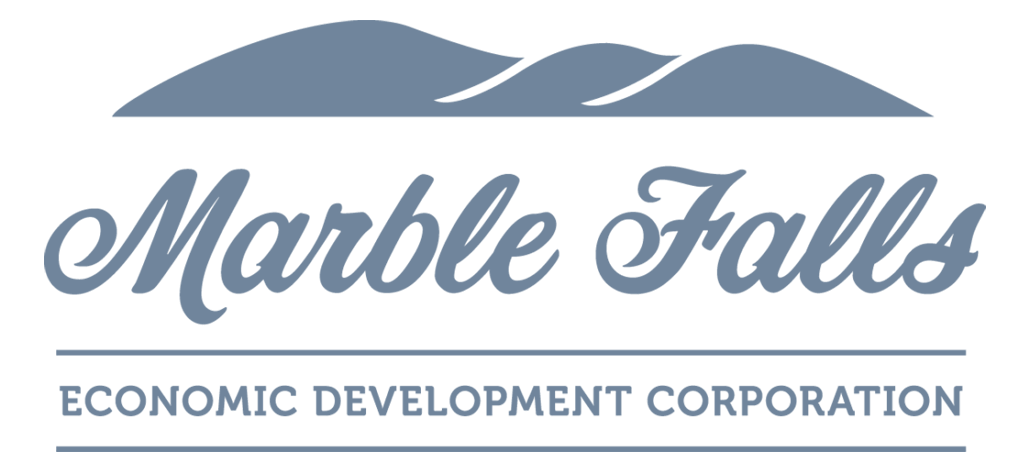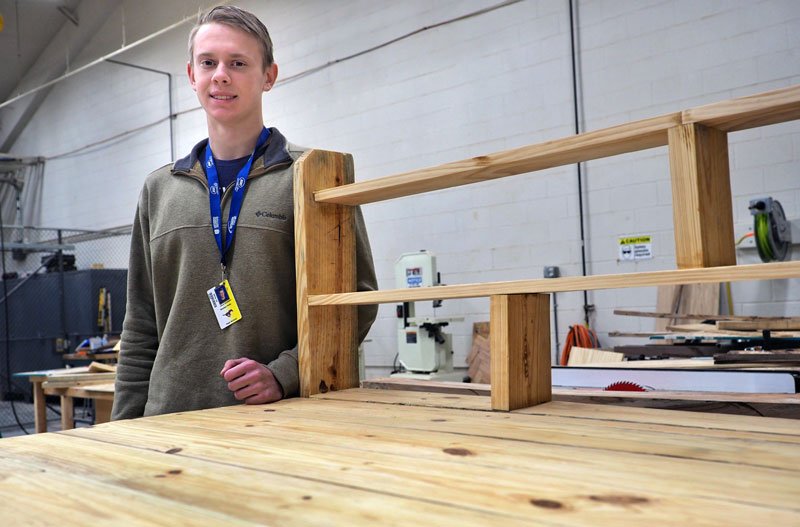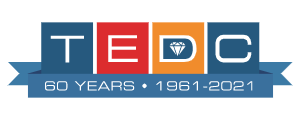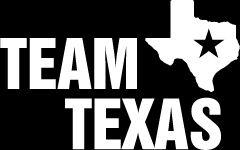Career and technical education building framework for future
EDITOR DANIEL CLIFTON
When Marble Falls High School junior Cole Schmidt and his classmates tackle projects for their construction trades class, they aren’t just building something for a grade; they’re building the framework for a well-paid and fulfilling career after high school or college.
“There’s a big need for people in the building trades,” said construction trades teacher Leonard Venghaus, “and it’s not just a good thing to learn if a kid wants to do it for a living.”
Construction trades and welding teacher Shawn Reed concurred, pointing out that, with the skills and certifications students learn and earn through the high school program, they can get higher-paying jobs as they go to college. The building trades programs at Marble Falls High School opens up a world of possibilities for students.
These skills can also cross over into all types of careers.
Schmidt, who recently helped build a full-size tack shed, finds the career and technical classes at the high school suit him because they’re not just about learning something from a book.
“I learn better when I’m doing something, building something,” he said. “I learn by doing it, not just reading about it.”
A trend in education today is “project-based learning” in which students learn concepts by applying them to a project. The idea is permeating all levels of school from early elementary to high school.
But it’s nothing new in career and technical education. CTE is all about project-based learning and has been for years. Some people might be more familiar with the term “vocational education,” though CTE has expanded to cover a wider selection of classes and coursework. Marble Falls High School offers a range of CTE courses, including building trades, engineering, agriculture science, nursing, EMT, business, hospitality, computer science, audio-visual, and graphic design classes. Within each of these are a number of other topics on which students can focus.
Students in CTE classes and programs are working with cutting-edge technology, including robotics and professional audio-visual equipment.
Across the country, high school CTE programs are thriving. According to the latest data gathered by the federal government through the Carl D. Perkins Career and Technical Education Act, enrollment in CTE classes continues to grow. During the 2013-14 academic year, about 7.5 million U.S. secondary students were enrolled in CTE classes. That number jumped to 8.3 million in the 2016-17 academic year.
Schmidt takes both construction trades and engineering classes along with is regular class load. In engineering class, he’s learning to use a robotic arm, even programming it to do simple tasks, though programming is very complex.
In both studies, he’s applying what he learns in real-world situations. The programming skills he learns in robotics class give him an edge on other students entering the workforce, whether right out of high school or college.
One of the things Schmidt enjoys about construction trades and engineering classes is problem solving. During the building of the 8-foot-by-8-foot-by-8-foot tack shed, he and another classmate would come across an issue with something not working or pieces not fitting together. An initial reaction might be to turn to the teacher for an answer, or, if things were really bad, just throw up their hands and walk away.
Reed would offer advice, but he wouldn’t give them the solution. By the time the students are tackling a major project like the tack shed, they’ve already studied a lot of the basic construction concepts.
“I want them to figure it out,” Reed said. “A big part of what we’re teaching is solving problems because they’re going to face them.”
Schmidt agreed.
“I like to make things and see how it all fits together,” he said. “But sometimes, it doesn’t. So we have to figure out why, you know, find out what the problem is, and then fix it. I learn better that way than if someone just tells me how to fix it.”
Venghaus sees problem solving as one of the biggest assets CTE students develop.
“That’s something they can use whatever they do,” he said.
CTE programs also give students a chance to try things out or discover new opportunities. Reed pointed out that a lot of high school students don’t know what they want to do for a career.
“Maybe this gives them an idea,” he said. “Maybe they find something they like that they didn’t know about or hadn’t thought about.”
As for post-secondary education, CTE classes give students a boost into college or technical/trade school, if that’s the path they choose, or help them land a good job in one of the related industries. Through the Marble Falls High School CTE programs, students have an opportunity to earn a number of certificates that can help them get jobs.
The CTE classes also give students a foundation in one of the biggest education/career trends: science, technology, engineering, and math, or STEM. According to the U.S. Bureau of Labor Statistics, STEM-related careers are the fastest-growing segment in the workforce. On top of that, medium annual wages for STEM-related careers hover around $76,000 compared to $35,080 for all other workers (based on May 2013 data).
The top-paying occupations are typically related to engineering.
Schmidt admitted that, before taking CTE classes at the high school, he really didn’t know the extent of career opportunities, especially in engineering. He’s leaning in that direction as a possible career choice.
“I thought, you know, there was just one type of engineer,” he said. “I didn’t know there were so many.”It goes back to what Reed said how CTE classes can help students find their path.
“And, in high school, they can still change their minds. They’re not locked in to some choice,” he said.
It gives them a chance to explore their opportunities, Venhaus added.
“We’re just trying to open up some possibilities for them,” he said.
This article was orginally found here:








